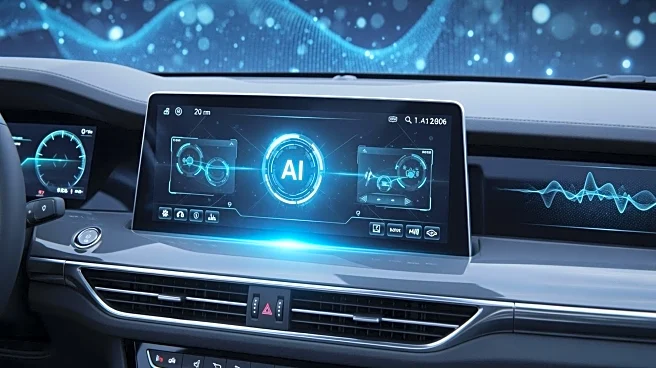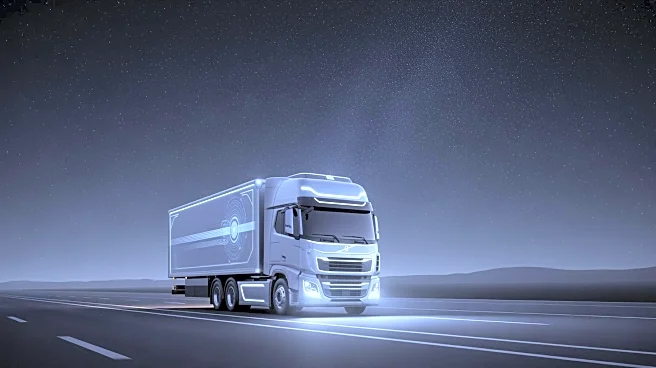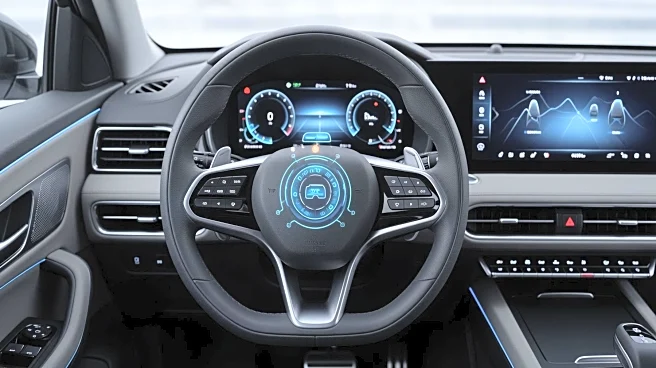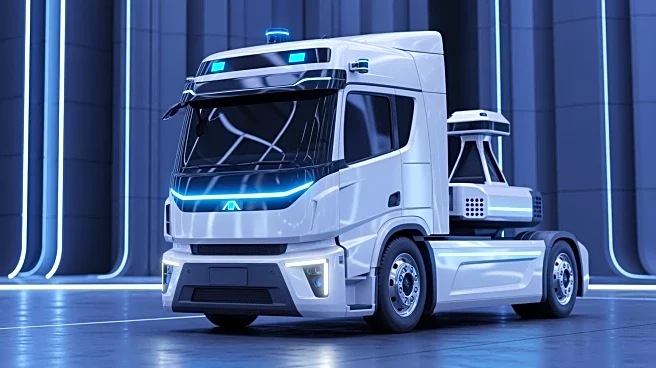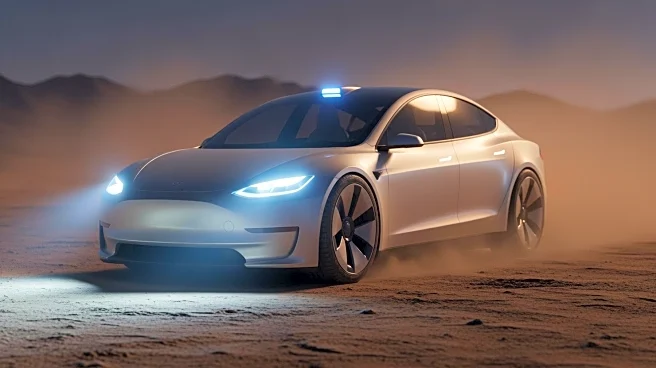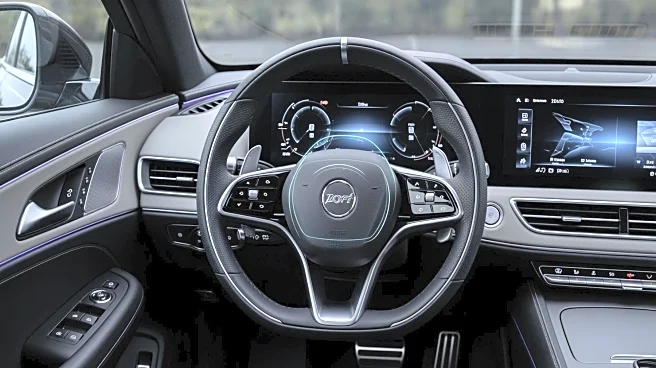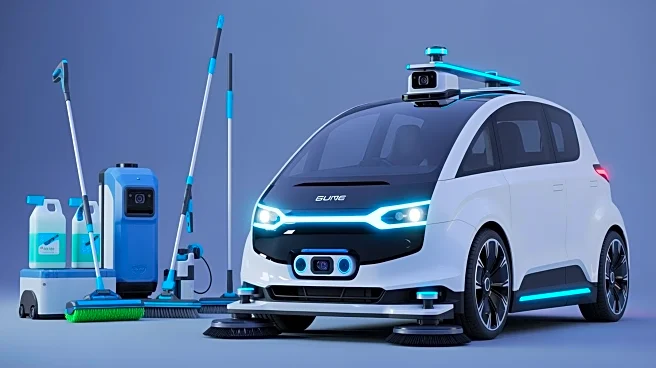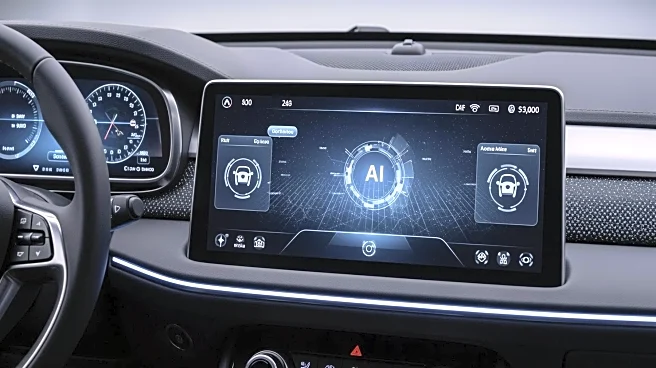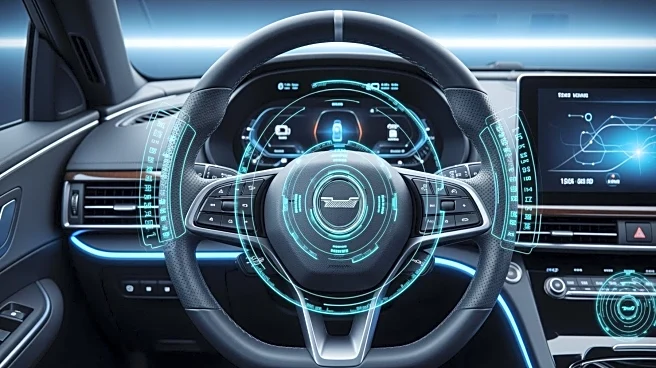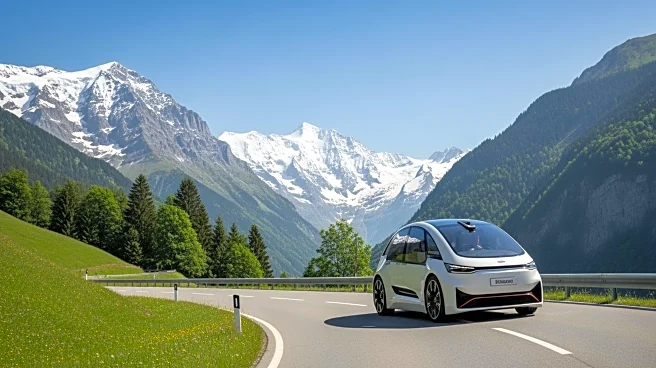What's Happening?
Nauto, a Silicon Valley-based company, is advancing road safety through its artificial intelligence (AI) software designed to predict and prevent vehicle collisions. Founded by Stanford professor Stefan
Heck, Nauto's technology focuses on real-time risk assessment, alerting drivers to potential dangers before they occur. The system, known as Predictive Risk Fusion, has been independently validated by the Virginia Tech Transportation Institute, demonstrating its ability to identify dangerous driving situations earlier, especially when drivers are distracted. This AI platform is embedded in vehicles, continuously analyzing the environment to detect pedestrians, cyclists, and traffic behaviors, providing immediate feedback to drivers without compromising privacy.
Why It's Important?
Nauto's technology represents a significant shift in road safety, moving from reactive measures to proactive prevention. By reducing collisions by up to 80%, the system not only enhances driver safety but also offers substantial economic benefits to fleet operators. Lower collision rates lead to fewer insurance claims and reduced liability, translating into cost savings and improved operational efficiency. The technology's ability to function across various vehicle types and environments further underscores its potential to transform fleet management and urban mobility, making roads safer for all users.
What's Next?
Nauto plans to expand its technology globally, integrating with insurers and automakers to embed its AI directly into vehicles and insurance coverage. This integration aims to provide financial incentives for safer driving. The company is also exploring applications beyond road transport, including aviation and rail, where similar safety challenges exist. As Nauto continues to refine its AI, it is poised to contribute to higher levels of vehicle autonomy and expand into new mobility forms, potentially including lighter vehicles like scooters.
Beyond the Headlines
The broader implications of Nauto's technology extend to urban planning and mobility. By reducing collisions, cities can safely integrate diverse modes of transport, fostering a more human-centered urban environment. This evolution could lead to shared spaces where cars, cyclists, and pedestrians coexist more harmoniously, enhancing the quality of urban life.
